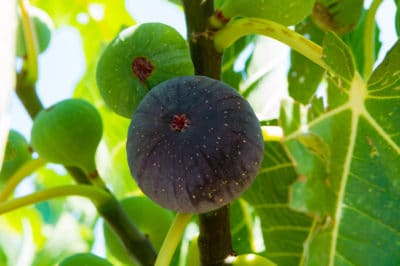Climate Matters
You can’t expect to get ripe figs if you’re trying to grow a fig that isn’t suited for your climate. Depending on the variety, figs will grow in USDA Zones 5 through 11. If you try to grow a variety that really needs high heat in a colder zone, odds are high that you’ll have fewer ripe figs. Like many fruits, figs also need a certain number of cold hours – winter chill – to ripen properly.
Choosing the Right Fig
You have many options when growing figs, even if it means going for a container tree you move indoors in cold weather. Here are a few:
- Black Mission – Zones 7-9
- English Brown Turkey – Zones 6-11
- Chicago Hardy Fig – Zones 6-10
- Desert King – Zones 5-9
- Janice Seedless Kadota – Zones 8-9
- Violette de Bordeaux – Zones 5-10.
Summer Heat and Winter Chill
Figs will ripen best if they have summer heat, but they also need something to help them break dormancy in spring. Some growers say that winter chill is the key. Winter chill is the number of winter days when temperatures are below 45°F (7°C). At the most, figs need only about 300 hours of winter chill.
Siting the Tree Properly
Figs will not fruit well or ripen properly if they are in the wrong spot. They generally do best in full sun for at least eight to 10 hours a day. If your garden gets shade, place the fig where it gets morning and midday sun. Most soils are fine as long as they drain well. If your soil is heavy to clay, add plenty of coarse sand or plant in in raised beds.
Avoid Stress
Fig trees that are stressed may ripen more slowly or may not ripen at all. Although they are drought-resistant, figs can still suffer from water stress. Water at least once a week. Too much water can also cause problems and increase the risk of disease. Excessive fertilizer results in lush leaf growth at the expense of the fruit crop.
Learn the Signs
If you don’t know when figs are ripe, you may harvest too early or late. A ripe fig has a deep color, even if green at maturity. The fruit gives slightly when squeezed. The skin develops what looks like a crackled glaze under the surface. Finally, a ripe fig lose its erect position and droops on its stem.
